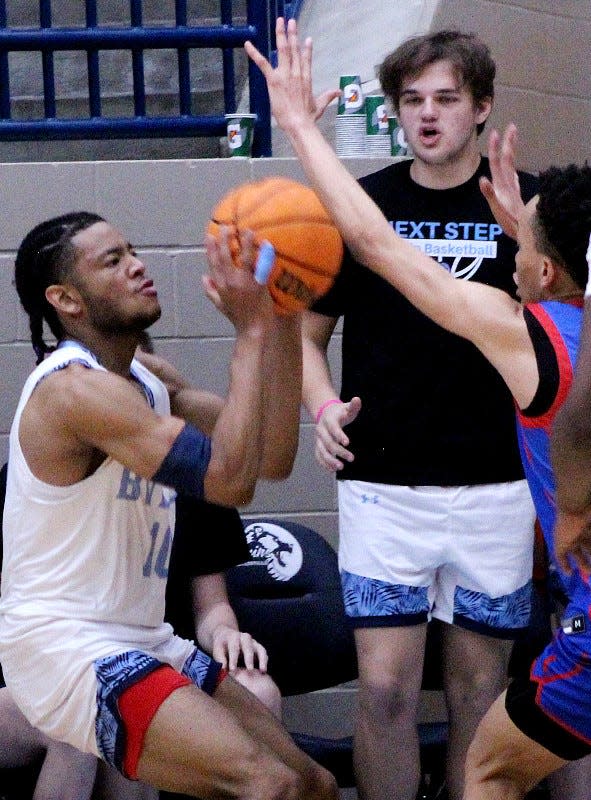Altered reality: Portal transfers growing, impact prep college options

Bartlesville High School head football coach Harry Wright is not a fan of the college transfer portal, which some have described as college free agency.
Wright is part of a growing number of high school coaches concerned about how the college portal is limiting the number of athletic scholarships for outgoing prep athletes.
And, the negative effects are likely going to grow.
“I’m not a fan of it,” Wright said. “I think we’re sending a bad message for a kid that’s its easier for them to jump to another school get what they want immediately. … I think it will end up having a negative impact on high school recruiting.”
The affects already have been felt for some prep student-athletes, he added.
The NCAA instituted in 2018 the new transfer portal rule.
The rule has been modified since.
According to the current regulation, there are designated windows of time, depending on the sport, for athletes to declare their intention to transfer.
An athlete is required to inform their current school of their intention, and the school is required within the next two business days to put the athlete’s name on the portal database.
Once a name appears on the database, the coaches from other schools are allowed to contact the athlete to begin the recruiting process.
In Division I football, men’s basketball, women’s basketball, men’s hockey and baseball, there is a one-time transfer rule. This means the athlete can change schools once without having to sit out for a year. There are a few circumstances that allow an athlete to go into the transfer portal any time during the year.
It’s the trickle-down effect that is putting the squeeze on available scholarships for high school athletes. Many college coaches are more concerned with “getting a guy who is more developed, who can help them right away,” than a high school athlete, Wright said.
According to multiple sources, coaches are making fewer offers to high school athletes. And that trend appears to be increasing.
The issue is this: Whereas the goal of coaches used to be to bring in the most promising high school seniors they could attract, many coaches are now holding on to several scholarships to offer to players in the transfer portal.
In college football, for example, if the teams in power conferences held back five scholarships each to give to portal transfers, that would be hundreds of scholarships that formerly would have gone to incoming high school athletes.
More and more, coaches are opting to use the transfer portal to as instant upgrades.
And, it's not just football. In fact the new rule has had a much heavier impact on college basketball recruiting.
A transfer player is older, better conditioned and stronger, more experienced and acclimated to the rigors of being part of a college sports program.
By taking advantage of the portal transfer, the coach saves the time and commitment of developing high school players — especially since some of those players might end up transferring anyway after the coach has invested in them.
Because of the portal, schools “are getting a guy who is more developed, who can help them right away,” Wright said.
And, the trend for portal transfers is mushrooming.
The number of football players on the D-I level that utilized the transfer portal in 2021-22 was 26.
The number so far for the 2022-23 period is double that number at 56.
Big 12 football players that have utilized the portal in the 2022-23 period are QB J.T. Daniels (West Virginia to Rice), QB Spencer Sanders (Oklahoma State to NA), QB Donovan Smith (Texas Tech to Houston), and QB Hudson Card (Texas to Purdue),
Transfers coming to the Big 12 are TE Austin Stogner (South Carolina to Oklahoma), and LB Dasan McCullough (Indiana to Oklahoma).
Wright sees a peripheral issue that could have a strong impact on the competitive balance of high school football in Oklahoma.
“Kids in high school are seeing college kids jumping back and forth,” he said, adding that he sees more athletes changing high schools than he did 10 years ago.
In 2022, the State of Oklahoma instituted an open transfer rule academically, that allows students to transfer to another school up to two times in a school year, depending on if they meet the criteria.
But, the Oklahoma Secondary Schools Activities Association said last year it would leave in place its rule to require a student-athlete to sit out a year from varsity competition after a transfer to a different district whose family still maintains a residence in the former district.
As coach Wright mentioned, there’s still plenty of athletes able to swap schools without the one-year sit-down penalty, as long as they do it according to the OSSAA rules.
Bartlesville High School Athletic/Activities Director Thad Hewitt agreed with Wright the college transfer portal rule could have an adverse affect on the number of scholarships given out to high school athletes.
Making the transfer process so appealing takes away from the spirit of college athletics, Wright said.
It takes away from the experience of remaining at a school and working with teammates to get better “and the pride of being at the school. I think it has a negative impact on that.”
This article originally appeared on Bartlesville Examiner-Enterprise: How the portal is affecting Bartlesville-area players' college options
